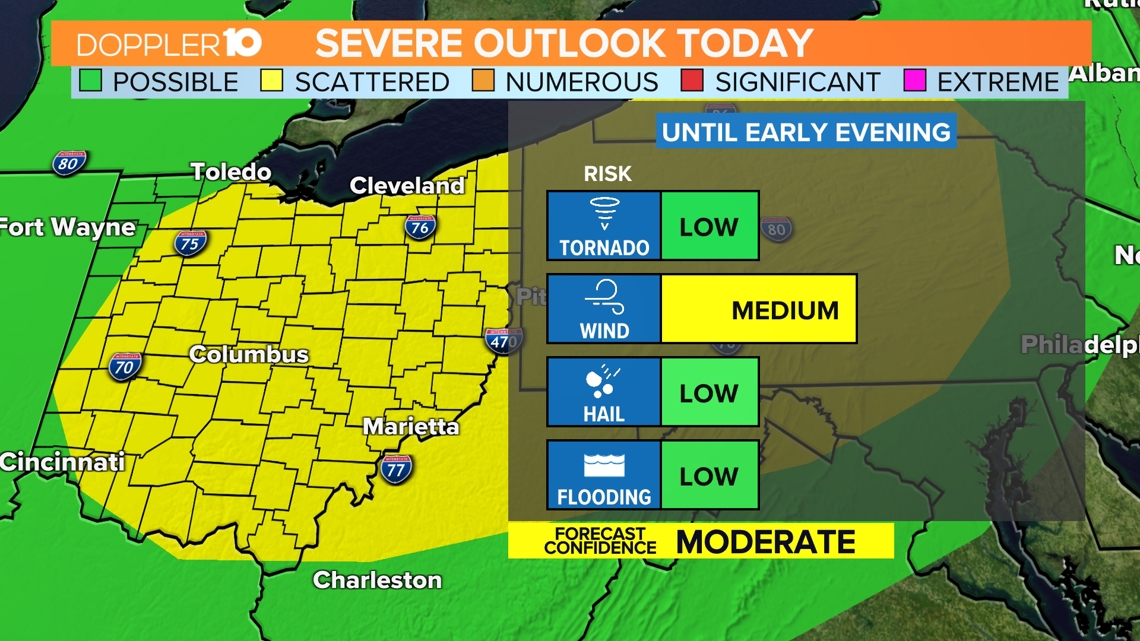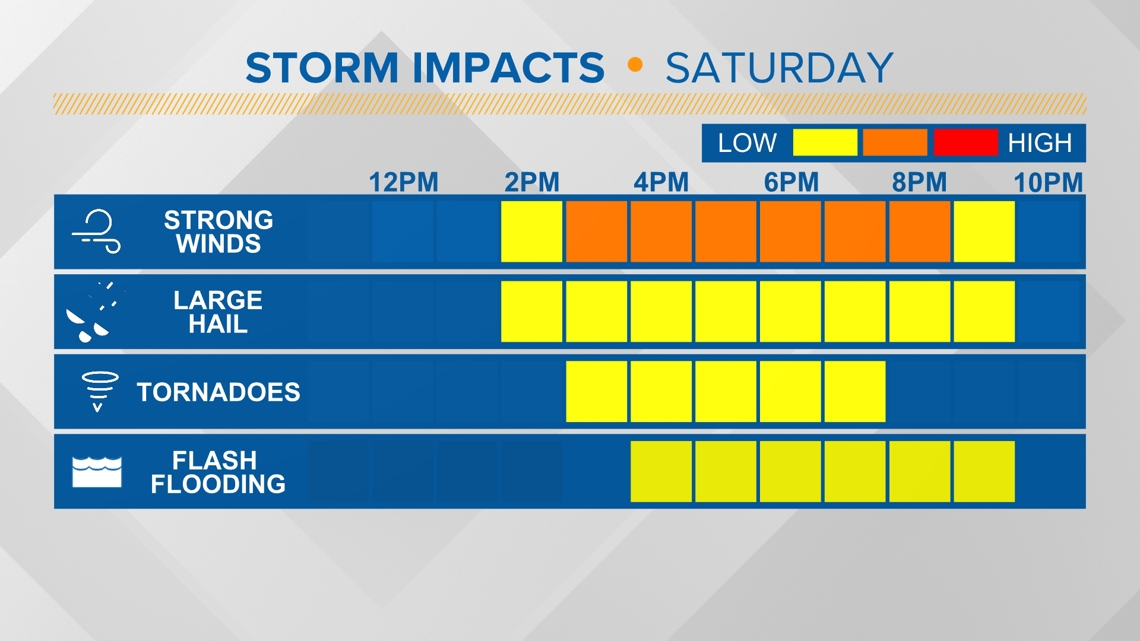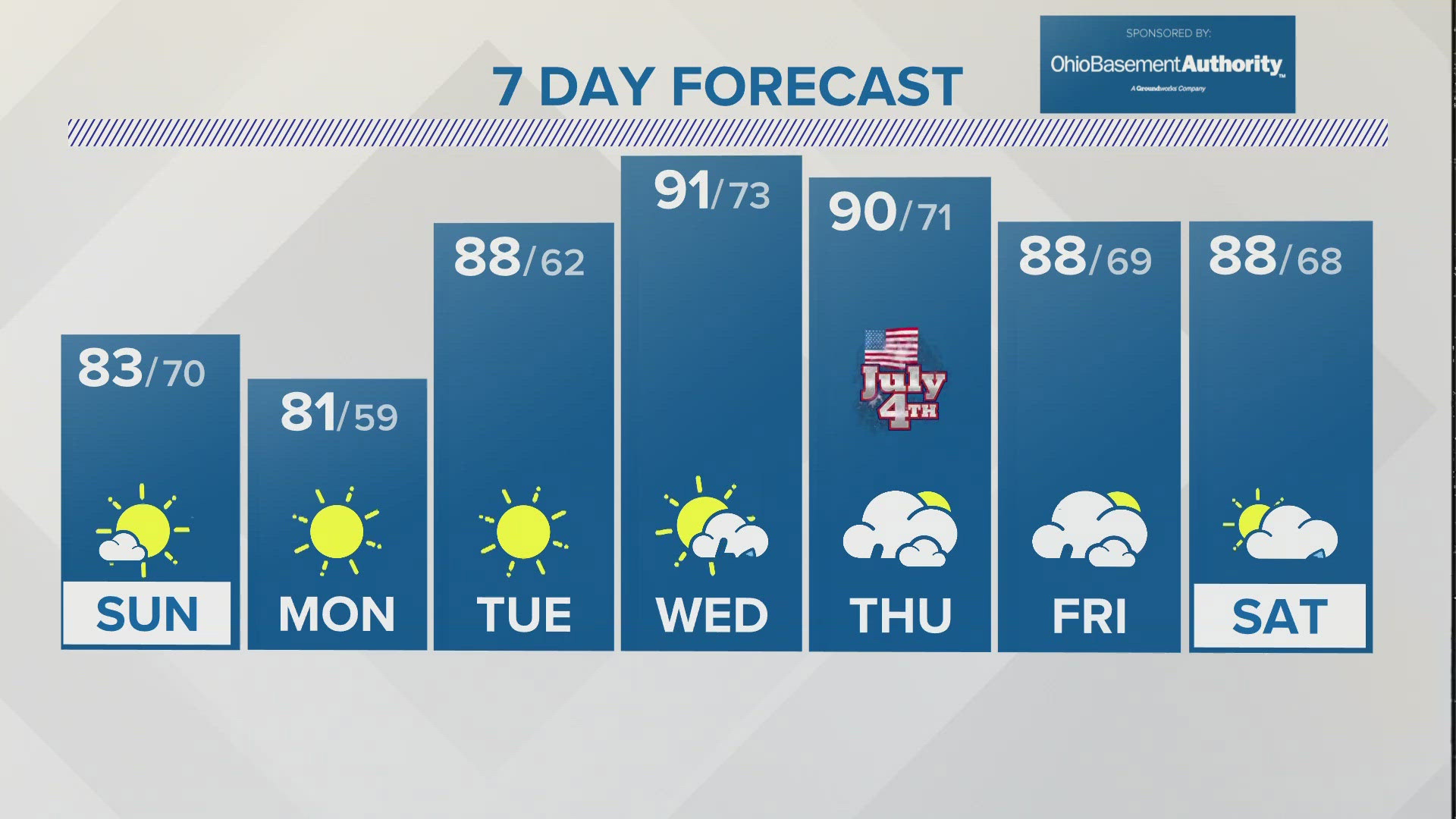COLUMBUS, Ohio — Our next storm system is set to arrive in central Ohio this afternoon with damaging winds, isolated flooding and isolated tornadoes.
While there will be an earlier wave, the strongest storms are set to arrive between 2 p.m. and 8 p.m.
A Severe Thunderstorm Watch has been issued for Fayette, Pike and Ross counties until midnight.
For a list of weather alerts, click here.


Winds are expected to gust to over 50 mph with some areas receiving more than an inch of rain in less than an hour.


The strongest winds, highest risk or flooding and highest tornado risk all fall north and east of the metro. Parts of Crawford, Marion, Morrow, Knox, Coshocton, Muskingum and Guernsey counties have the chance to see the strongest part of these storms.
Conditions improve overnight. A few isolated showers move through before sunrise on Sunday, but skies clear and sunshine returns through the day.
Doppler 10 Weather Resources: Interactive radar | Hourly forecast | Watches & warnings | Download the 10TV app
Preparing for severe thunderstorms
*Information from the National Weather Service
- Be weather-ready: Download the free 10TV News mobile app to receive weather alerts and personalized weather forecasts for your area.
- Create a communications plan: Have a family plan that includes an emergency meeting place and related information. Pick a safe room in your home such as a basement, storm cellar or an interior room on the lowest floor with no windows.
- Practice your plan: Conduct a family severe thunderstorm drill regularly so everyone knows what to do if damaging winds or large hail is approaching. Make sure all members of your family know to go there when severe thunderstorm warnings are issued. Don't forget pets if time allows.
- Prepare Your Home : Keep trees and branches trimmed near your house. If you have time before severe weather hits, secure loose objects, close windows and doors, and move any valuable objects inside or under a sturdy structure.
- Help Your Neighbor: Encourage your loved ones to prepare for severe thunderstorms. Take CPR training so you can help if someone is hurt during severe weather.
During severe thunderstorms
- Stay weather-ready with the 10TV News app.
- At Your House: Go to your secure location if you hear a severe thunderstorm warning. Damaging wind or large hail may be approaching. Take your pets with you if time allows.
- At Your Workplace or School: Stay away from windows if you are in a severe thunderstorm warning and damaging wind or large hail is approaching. Do not go to large open rooms such as cafeterias, gymnasiums or auditoriums.
- Outside: Go inside a sturdy building immediately if severe thunderstorms are approaching. Sheds and storage facilities are not safe. Taking shelter under a tree can be deadly. The tree may fall on you. Standing under a tree also put you at a greater risk of getting struck by lightning.
- In a Vehicle: Being in a vehicle during severe thunderstorms is safer than being outside; however, drive to the closest secure shelter if there is sufficient time.
After severe thunderstorms
- Contact Your Family and Loved Ones: Let your family and close friends know that you're okay so they can help spread the word. Text messages or social media are more reliable forms of communication than phone calls.
- Assess the Damage: After you are sure the severe weather threat has ended, check your property for damages. When walking through storm damage, wear long pants, a long-sleeved shirt and sturdy shoes. Contact local authorities if you see power lines down. Stay out of damaged buildings. Be aware of insurance scammers if your property has been damaged.
- Help Your Neighbor: If you come across people that are injured and you are properly trained, if needed, provide first aid to victims until emergency response team members arrive.

